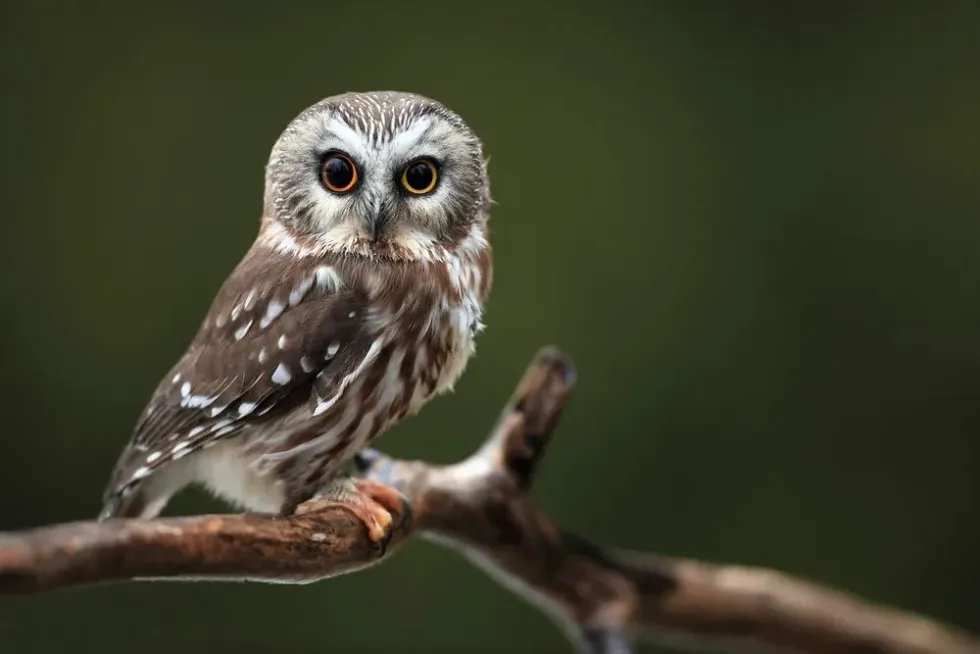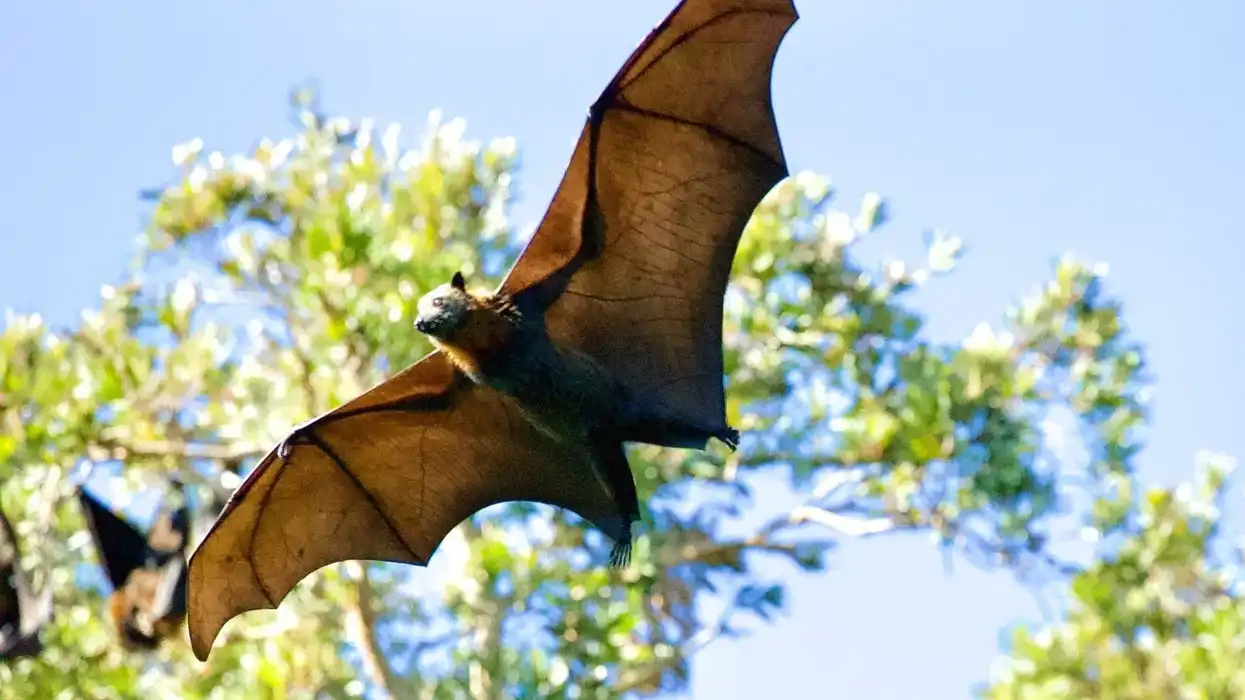The Northern Saw Whet Owl is one of the more interesting birds out there! From their breeding, food, young, family, and habitat in the forest, there is nothing that won't fascinate you.
These moderately sized birds are found in various areas all around North America.
They primarily have their habitat in the forests, where they have a family, raise their young, and even have a breeding range in the same location. At as young as five weeks, the young of this bird is ready to leave the nest boxes, and pursue a life of their own!
They have a particular breeding season in which even these small birds can leave their nest to seek out other birds, and it is in this range and season that you will see them at their most aggressive.
If you stray too near, they will attack and are particularly active at night. This is when the eggs need protection from predators that can reach their nest after breeding seasons resulting in the laying of eggs.
Do you want to know more about their breeding season, their nest, and the call they make to attract mates? Then read on, and also do take a look at cock-of-the-rock and mealy parrot facts too.
Northern Saw-Whet Owl Interesting Facts
What type of animal is a northern saw-whet owl?
The Saw-Whet is a type of owl.
What class of animal does a northern saw-whet owl belong to?
The Saw-Whet Owl, Aegolius acadicus, belongs to the class of birds.
How many northern saw-whet owls are there in the world?
There are approximately 200,000-600,000 northern saw-whet owls in the world.
Where does a northern saw-whet owl live?
The Saw-Whet Owl (Northern) lives in the woods across North America.
What is a northern saw-whet owl's habitat?
The Owl (Northern) Saw-Whet bird seems to favor mature forests which have an open understory of scavenging, dense conifers for roosting, deciduous trees for nesting, and nearby riverside habitats. They do, however, build nests in a variety of wooded environments, such as disturbed deciduous forests, coniferous swamps, savannahs, riverside woodland, and habitat of shrub-steppe.
Poplar groves, dune meadows, and coastal scrub are other places where they built their nests in the forest.
Who do northern saw-whet owls live with?
In the winter, these North American birds are solitary and prefer to roost in dense foliage around a tree trunk, typically in a coniferous tree or tangled thicket. As long as they are not disturbed, saw owls are fairly tame and tolerant.
How long does a northern saw-whet owl live?
The Saw-Whet Owl, Aegolius acadicus, can live up to seven years in the wild, and up to 16 years in captivity.
How do they reproduce?
Monogamy is common among northern saw owls. When there is plenty of food, however, they can become polygynous.
Females are capable of raising two or more broods in summer. The female does this by leaving the first brood's male and chicks early and mating with another male.
Breeding pairs typically only remain together for one season. Between March and July, northern saw-whet owls breed.
In late winter and early spring, males begin calling sounds from the nest site, and cache food in the nest site to woo a female. Once a couple or pair has a male and female, the female Northern Saw-Whet selects a nesting place and lays four to seven eggs, and incubates the eggs for four weeks.
After 18 days, the female may leave the nest, but the male brings food to the chicks. But sometimes after 18 days, females started helping males for collecting food.
Young chicks leave the nest when they are approximately between four and five weeks old and they become independent after six to eight weeks. Saw Whet males bring food in the nest for the female and chicks and protect the nest cavity.
What is their conservation status?
The conservation status of Saw-Whet Owl Aegolius is ‘Least Concern’ and does not need conservation.
Northern Saw Whet Owl Fun Facts
What do northern saw-whet owls look like?
The Saw-whet North American Owl is a little-sized owl that has a tiny tail and a short body. They don't have ear tufts on their broad rounded head. They have a light brown-colored face with a dark brownish tint and whitish streaks across it.
Their chests and bellies are striped in brown and white. Their yellow eyes are huge.
Over their beaks, their white brows form a 'Y'. They also have small white spots on their body. This Whet Owl (Aegolius acadicus) has thick gripping talons for hunting prey and a hooked-shaped upper beak for ripping up the meat, much like other raptors.
How cute are they?
These small birds of North America are charming. These Saw Whets have mottled dark brown and white coloring, a large round head with no ear tufts, and large yellow eyes, and are very tiny and delicate.
Overall this small bird looks cute. But be careful not to stray too near to their nest or habitat, because the male bird can get aggressive, and attack.
How do they communicate?
These North American birds, Saw-whets owls, use their senses of sound, vision, call, and touch to communicate with one another and to perceive their surroundings, as well as to track prey. This nocturnal (most active at night) bird's song is a collection of whistled toots. The northern saw-whet owls use vocalizations and visual signals to communicate.
Northern Saw-Whets owls males vocalize a call to attract females during mating or copulation. They shape a pair by touching and preening each other's feathers. This act strengthens or creates the two's bond.
How big is a northern saw-whet owl?
Adult birds of this species are 6.7-8.7 in (17–22 cm) in length and the wingspan's length is 42–56.3 cm. American Robins are 16.5-22 in (23-28 cm) long and the length of the wingspan is 12-15.7 in (31-40 cm). American Robins are slightly larger than Northern owls.
How fast can a northern saw-whet owl fly?
As very little research work done on this species, it is unknown how fast this bird can fly. However, they do fly fast enough to capture small mammals as they run, and fast enough to defend their nest when breeding.
How much does a northern saw-whet owl weigh?
Northern saw-whet owls are eastern North America's tiniest owls. Males are just 0.16 lb (75 g), almost the same weight as an American robin. Females weigh around 0.22 lb (100 g) more than males - which helps them in breeding season when they have to maintain a nest.
What are the male and female names of the species?
There is not any specific name for the male and female species of Whet Owl (Aegolius acadicus).
What would you call a baby northern saw-whet owl?
The baby of Northern Saw-Whet Owls doesn't have any other name.
What do they eat?
Northern Saw-whet Owls prey on small animals at night, stalking them from a lower branch across the forest floor. White-footed mice and deer mice are the most common prey, but shrews, pocket mice, house mice, jumping mice, harvest mice, montane voles, and babies of small mammals such as pocket gophers and squirrels can also be found.
At the time of migration, these birds eat titmice, sparrows, wrens, robins, and some of the other tiny owl species to support their diet.
Moths, grasshoppers, bugs, and beetles are among the insects they consume. Saw-whets that live near the coast can eat isopods, and amphipods, which are intertidal invertebrates.
Are they dangerous?
Since big owls are the main predators of these birds, they will search for an environment with plenty of shelter. This bird would prefer a perch in dense foliage that is close to the trunk of the tree, often in a tangled thicket or coniferous tree well away from humans, while they are solitary in the winter.
Patience and docility are characteristics of saw-whet owls, and they are not dangerous to humans if they are not disturbed excessively.
Would they make a good pet?
The reality is that owls are not suitable for keeping pets. Owls fly quietly, but if their feathers aren't kept clean, they make a lot of noise. Native owls cannot be kept as pets in the United States; they can only be owned by qualified, licensed persons when being rehabilitated, such as foster parents in a rehabilitation facility.
Did you know...
The 'skiew' call made by an alarmed owl is the source of the owl's name. This sound is similar to a saw-whetting sound.
Northern saw-whet owls affect small mammal populations because they consume them. They also serve as a home for at least nine parasitic external parasite species.
Northern saw-whet owls assist humans by destroying rodents that are considered pests by many people.
At a height of 15-60 ft over the ground level, the nests are built in tree cavities. They normally use woodpecker-made cavities that have been abandoned. Unnatural nest boxes are also an option, but they can only use a single nesting site once.
Do northern saw-whet owls migrate?
Saw-whet North Owls are migratory birds in part. Not all of them do; some even linger through the winter in the far north of their breeding range. However, every fall, a moderate number of people migrate south, especially in eastern North America.
What eats the northern saw-whet owl?
Northern saw-whet owls are potentially preyed upon by large owls such as great horned owls, long-eared owls, and barred owls.
Here at Kidadl, we have carefully created lots of interesting family-friendly animal facts for everyone to discover! Learn more about some other birds including the albatross or peregrine falcon.
You can even occupy yourself at home by drawing one on our Northern saw-whet owl coloring pages.









